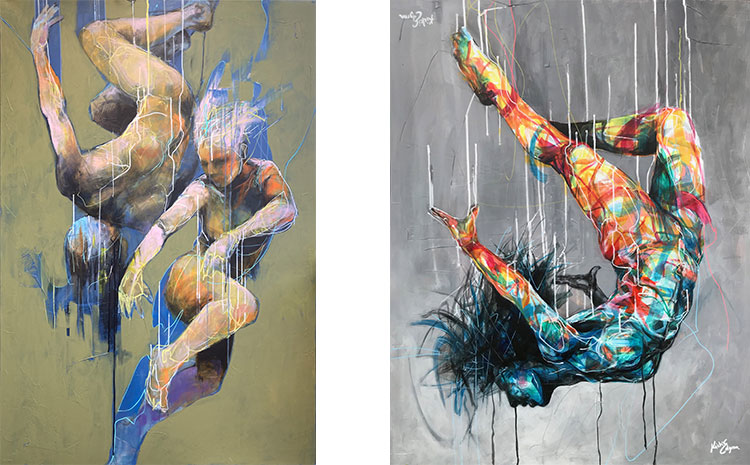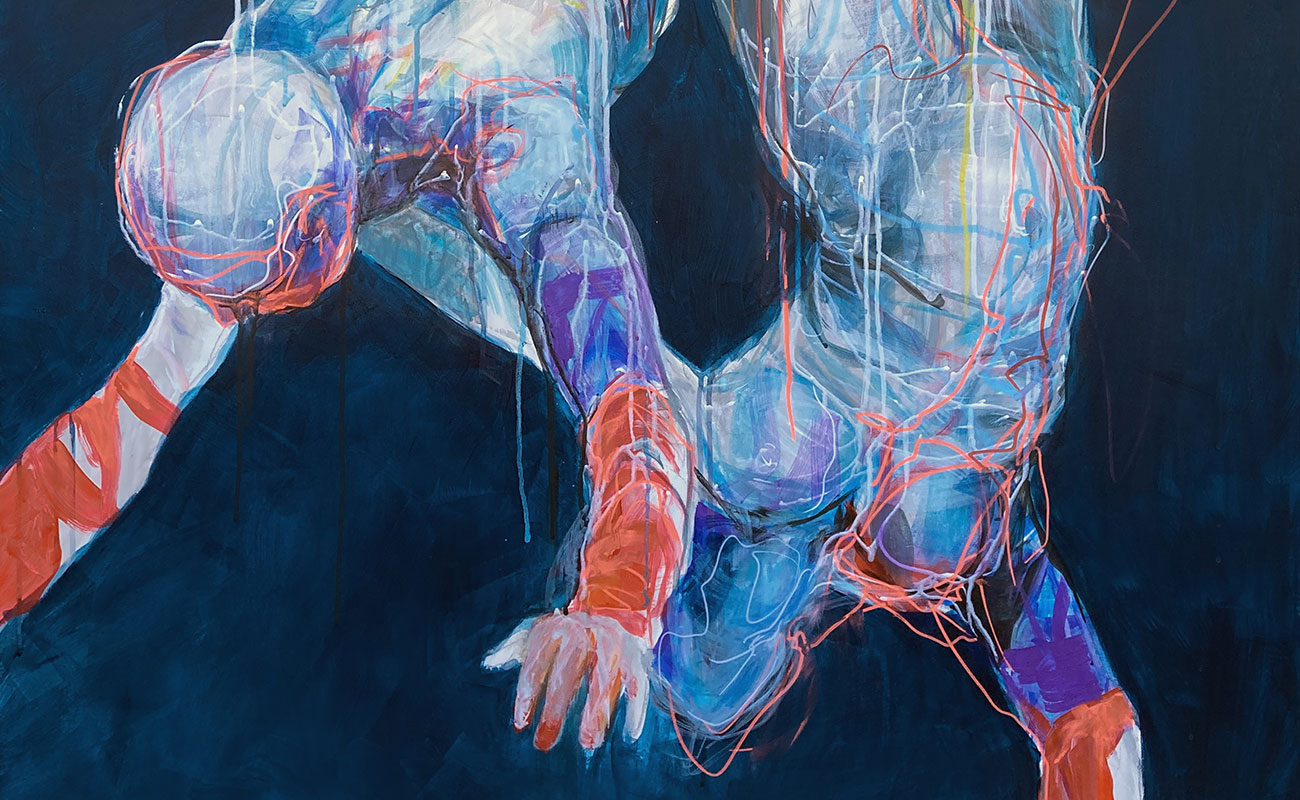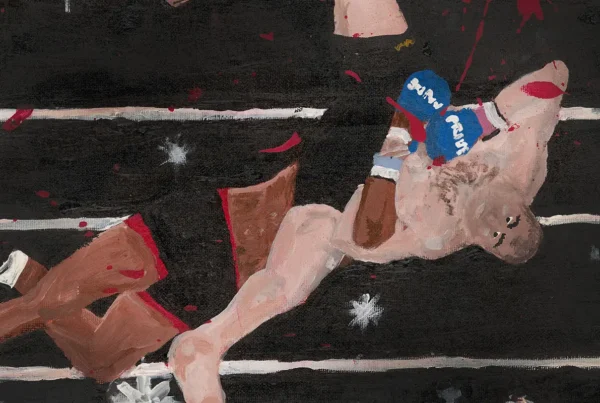“People, people, and people. People in bold colors and in crisis situations. But for each painting, I try to find something new and interesting about humans – it never ends, just like notes in music that can be put together in an unlimited number of melodies, so I can depict people in different ways.”
Kicki Edgren’s Creative Journey amidst a Boisterous Childhood
Growing up in a bustling household filled with the constant sounds of her three rambunctious brothers playing music from Eddi Medusa, Kiss, and Marillion, Kicki Edgren found solace in her locked room on the second floor of the family villa. Amidst the chaos of her brothers’ experiments with gunpowder, motorcycle licenses, and car crashes, her mother cooked potatoes while singing after a full day of teaching, and her father, an oil-stained inventor figure, was often absent-minded and elusive.
Despite the creative energy that permeated throughout the household, Kicki was the only one who possessed a natural understanding of color, lines, and composition. She took on the role of the artist and drew incessantly, building fantasy worlds with her papers, pens, and stuffed animals. Her love for art was not merely driven by external factors such as attention, praise, and friends, but rather stemmed from her innate passion for the craft. As she notes, “you should do what you like,” and Kicki knew that she had a talent.
Her childhood experiences instilled a fierce determination to pursue her artistic aspirations. Through her unwavering dedication and tireless practice, Kicki honed her skills and developed a unique artistic style. Her drawings transformed from simple pastimes to powerful expressions of her creativity, impressing both her peers and mentors.
Kicki’s journey as an artist did not come without its challenges, but her unwavering passion and dedication proved to be invaluable in overcoming them. She continues to create awe-inspiring works that capture the beauty and complexity of the world around us, establishing herself as a formidable force in the art world.
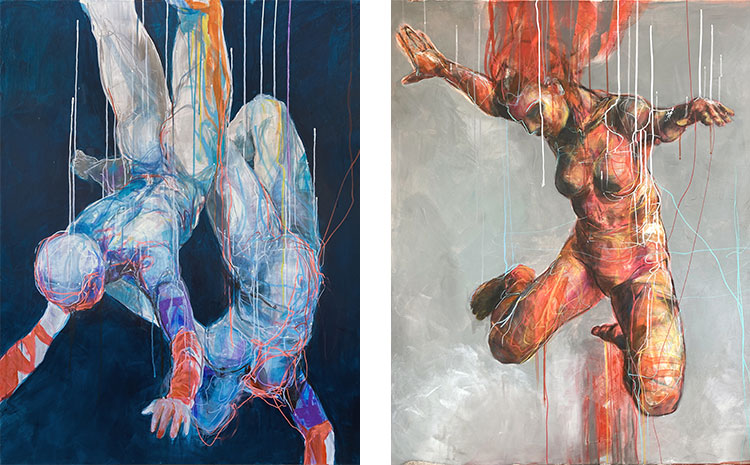
The Art of Human Figures: Kicki Edgren’s Passion for Portraiture
At the young age of 15, Kicki Edgren began taking commissions to create portraits for a significant portion of Trollhättan’s residents. Employing dry pastel and charcoal as her primary mediums, Edgren displayed a remarkable talent for capturing faces and human figures. Her fascination with the nuances of skin, form, shadows, and expressions ultimately led to a deeper interest in human anatomy, movement, and the body itself.
Edgren often practiced by studying her own reflection, meticulously sketching body parts such as knees, hands, and shoulders. Through countless iterations, she would eventually discover the perfect line to convey her subject. Despite having created thousands of paintings, people remain her sole subject matter, with nature and landscapes holding no appeal for her artistic pursuits.
In Edgren’s oeuvre, human figures take center stage, depicted in vibrant colors and often in emotionally charged situations. She continually seeks fresh, captivating aspects of humanity to explore, comparing her endless variations to the infinite combinations of musical notes. Recently, she has focused on portraying bodies in motion, but she finds it necessary to diversify her subjects in order to maintain her passion for the craft. While her paintings contain layers of thought and implied narratives, Edgren prefers to leave their interpretation to the viewer, encouraging self-reflection.
A key aspect of Edgren’s artistic approach is the quest for balance. With a background in graphic design and illustration, she is acutely aware of the need for visual harmony. Her compositions are carefully crafted to ensure that focal points do not compete with extraneous elements, such as the background. This attention to detail extends to her choice of colors and the overall composition, which she believes should resonate on an instinctual level. To emphasize the primary subject—the human figure—Edgren often utilizes flat, muted backgrounds that serve to enhance the prominence of her expressionistic, forceful, and visually striking protagonists.
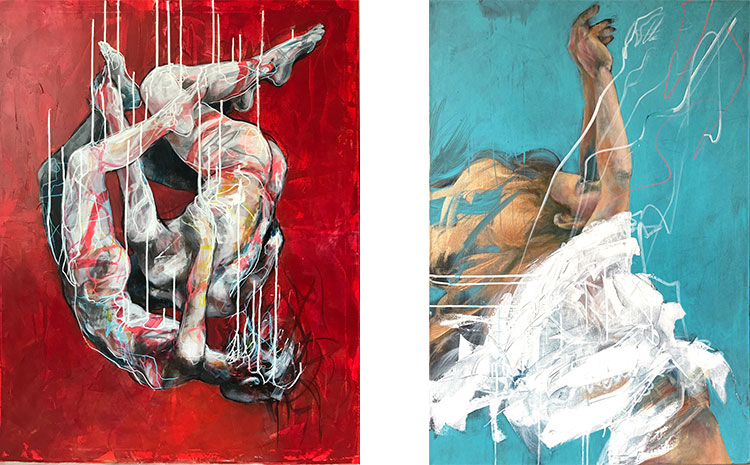
Evolving Expression: Kicki Edgren’s Restless Pursuit of Artistic Perfection
Kicki Edgren is a creator characterized by her restlessness and therefore worked witn many different creative projects in her life – from writing to pattern design, from strategic brand management to illustrations. When painting, the restlessness reflects in her constant pursuit of new techniques and styles. This dynamic nature has led her to explore various modes of expression, often transitioning between styles in a matter of weeks. The artist’s own experiences with different materials, such as oil and acrylic or brushes and knives, have informed these transformations. While viewers may not perceive the distinction, Edgren revels in each discovery.
Despite her continual evolution, Edgren remains self-critical, often scrutinizing her previous works with a discerning eye. She believes that her most recent piece is always the best, invoking a sense of awe—albeit a fleeting one, as she quickly moves on to her next creation. The artist acknowledges, however, that there is an underlying commonality throughout her 40-year career, with the primary difference being the refinement of her technique.
Intriguingly, Edgren does not view herself as having a dream project, as she has never fully identified with the label of an artist. She perceives herself as an outsider in the art world, with minimal connections and an introverted nature. The reason for this may be that she has several university degrees in visual communication and design and that has been her main career. Nevertheless, her passion for painting provides a sense of fulfillment and purpose. While she has exhibited her works globally, Edgren is still in search of her own artistic aspirations.
For Edgren, the creative process is most successful when it arises organically. Consequently, she values the proximity of her studio to her home, allowing her to create whenever the inspiration strikes. This accessibility enables her to balance her artistic pursuits with her family life and her full-time career as a designer. She cherishes the flexibility of painting on her terms, creating when the desire arises and stepping back when it does not.
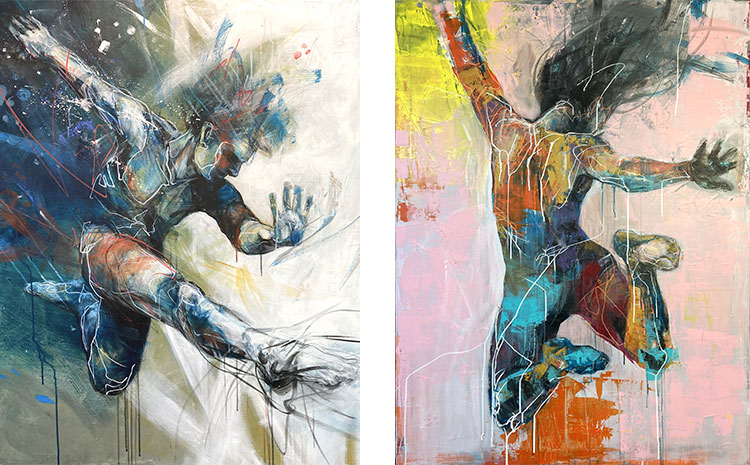
The Falling Bodies Series: A Glimpse into Kicki Edgren’s Creative Inspirations
Kicki Edgren has achieved widespread recognition and success through her captivating series of falling bodies paintings. These dynamic works not only garnered attention and financial rewards for Edgren, but also facilitated valuable connections within the art world. The series emerged serendipitously, and since its inception, the artist has continuously evolved her style, exploring innovative perspectives and techniques to maintain her enthusiasm and creative drive.
Edgren recognizes that, while she still enjoys creating these paintings, her mounting performance anxiety presents increasing challenges. Each piece within the series has found a buyer, fueling the pressure to continue producing more. However, she acknowledges that the body’s potential contortions and the well of creative ideas may soon be exhausted, signaling a transition toward new artistic directions.
Emotions and interpersonal relationships serve as primary sources of inspiration for Edgren’s work, with experiences of anxiety, joy, love, and animosity propelling her creative process. By engaging with the narratives of those around her or reflecting on her own life, she seeks to capture the essence of humanity in her paintings. Aesthetically, she draws influence from graffiti, street art, abstract art, and expressionism, favoring raw, unpredictable elements over conventional beauty and perfection.
In instances where her creations inadvertently become beautiful, Edgren is quick to disrupt their harmony, ensuring that her work retains a sense of rebelliousness and authenticity, akin to the punk ethos. This commitment to embracing imperfection and challenging conventional standards reflects her dedication to conveying the complexities and nuances of human experience.
